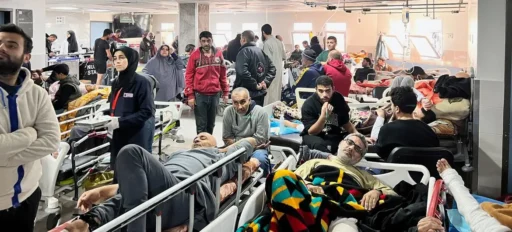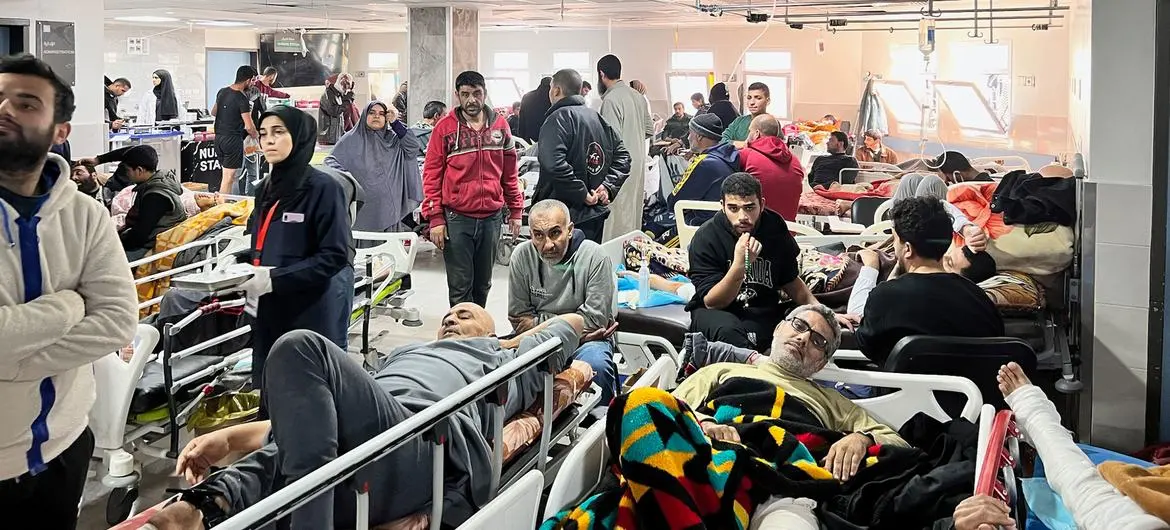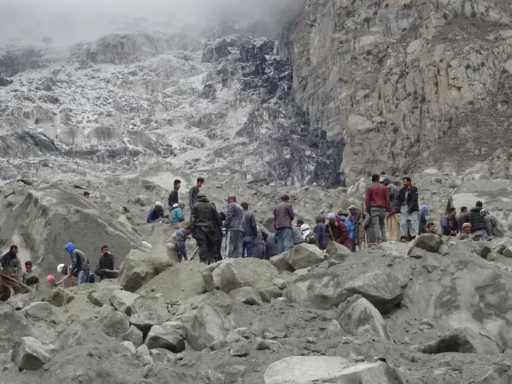Gaza healthcare system is on the verge of complete failure, creating an unprecedented humanitarian crisis affecting over two million Palestinian civilians. As of late 2023, the situation has worsened to catastrophic levels, with only half of Gaza’s hospitals operating at a basic level.
The harsh truth of this crisis is evident in these critical statistics:
- 95% of the population lacks access to safe drinking water
- 64% of primary health facilities have closed down
- 50% reduction in functioning hospitals
- 2 million+ civilians directly affected by the healthcare breakdown
Collapse of Gaza Healthcare System
The current condition of Gaza’s medical infrastructure is not just a systemic failure—it’s a humanitarian emergency that requires immediate global attention. Palestinian civilians are fighting every day for essential medical care, including emergency trauma treatment and primary healthcare services.
This collapse of healthcare is caused by a combination of devastating factors:
- Ongoing military conflict
- Severe blockades limiting medical supplies
- Critical shortages of fuel
- Widespread damage to infrastructure
- Limited access to necessary medications
The consequences for Palestinian civilian life have been severe and extensive. Patients who need regular medical attention—such as those with chronic conditions, pregnant women, and children—are finding themselves in increasingly desperate situations as crucial medical services become unavailable or out of reach.
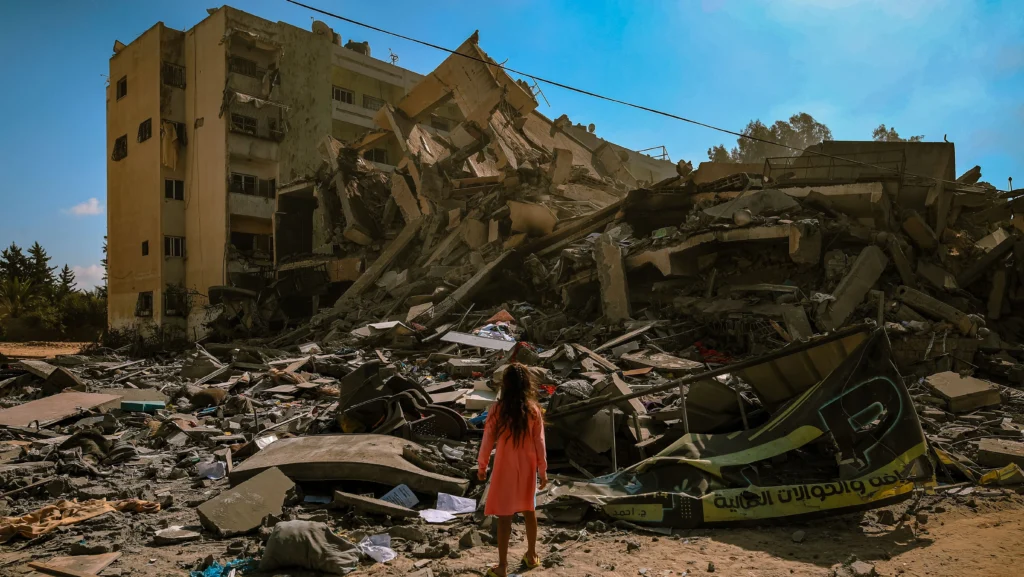
The Impact of Infrastructure Damage and Blockades on Healthcare Delivery
The physical destruction of Gaza’s healthcare infrastructure has reached unprecedented levels, with devastating consequences for medical care delivery. Recent assessments reveal that only 13 out of 36 hospitals remain partially functional, operating at minimal capacity under extreme conditions.
Key Infrastructure Damage
Key infrastructure damage includes:
- Destroyed emergency departments
- Collapsed surgical wings
- Damaged medical equipment
- Compromised water and electrical systems
- Demolished ambulance stations
- Ruined medical storage facilities
Critical Shortages Due to Blockades
The implementation of strict blockades has created severe limitations on essential resources. Medical facilities face critical shortages of:
- Basic medications and antibiotics
- Surgical supplies and sterile equipment
- Anesthetics and pain management drugs
- Fuel for generators and ambulances
- Blood products and testing materials
- Essential medical gases
These shortages force healthcare providers to make impossible decisions. At Al-Shifa Hospital, doctors report performing surgeries without anesthesia, using mobile phone lights during power outages. Patients requiring dialysis receive reduced treatment sessions, while those needing intensive care face limited access to vital equipment.
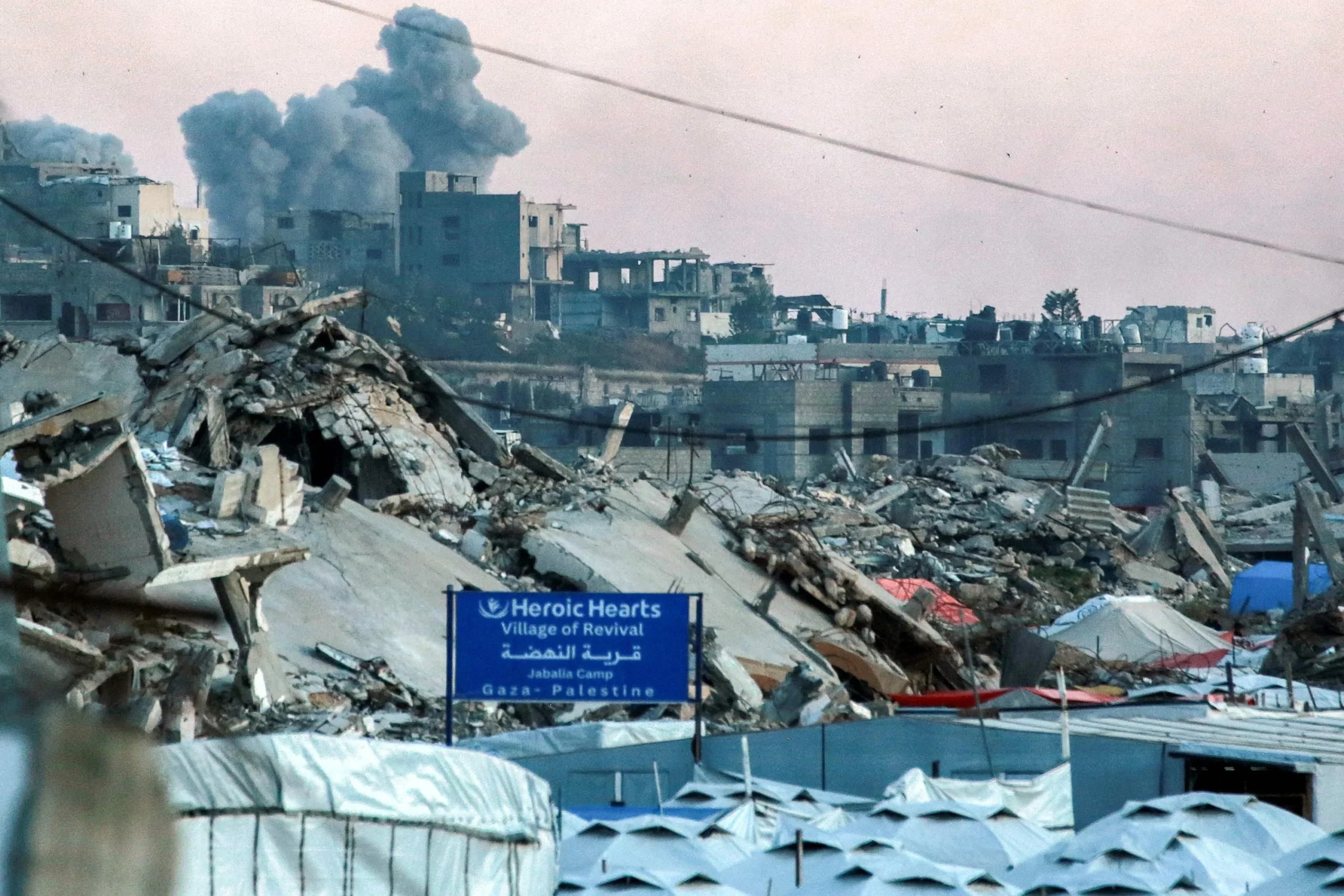
Staffing Crisis in Hospitals
The blockade’s impact extends beyond physical supplies. Medical personnel cannot enter or leave Gaza, leaving hospitals severely understaffed. Current statistics show:
- 60% reduction in available medical staff
- 80% shortage of specialized surgeons
- Critical lack of emergency medicine specialists
- Insufficient nursing staff for basic patient care
Real-World Consequences in Hospitals
Real-world consequences manifest daily in Gaza’s hospitals. Recent reports document:
“Patients are being treated on floors without beds, surgical procedures conducted without proper sterilization, and wounds dressed with whatever materials are available” – Gaza Health Ministry Report
Ripple Effect on Healthcare System
The damage to medical infrastructure creates a ripple effect throughout the healthcare system. Hospitals still standing must absorb patients from destroyed facilities, leading to:
- Overcrowded wards
- Extended wait times for urgent procedures
- Increased risk of medical complications
- Higher mortality rates for treatable conditions
- Compromised infection control measures
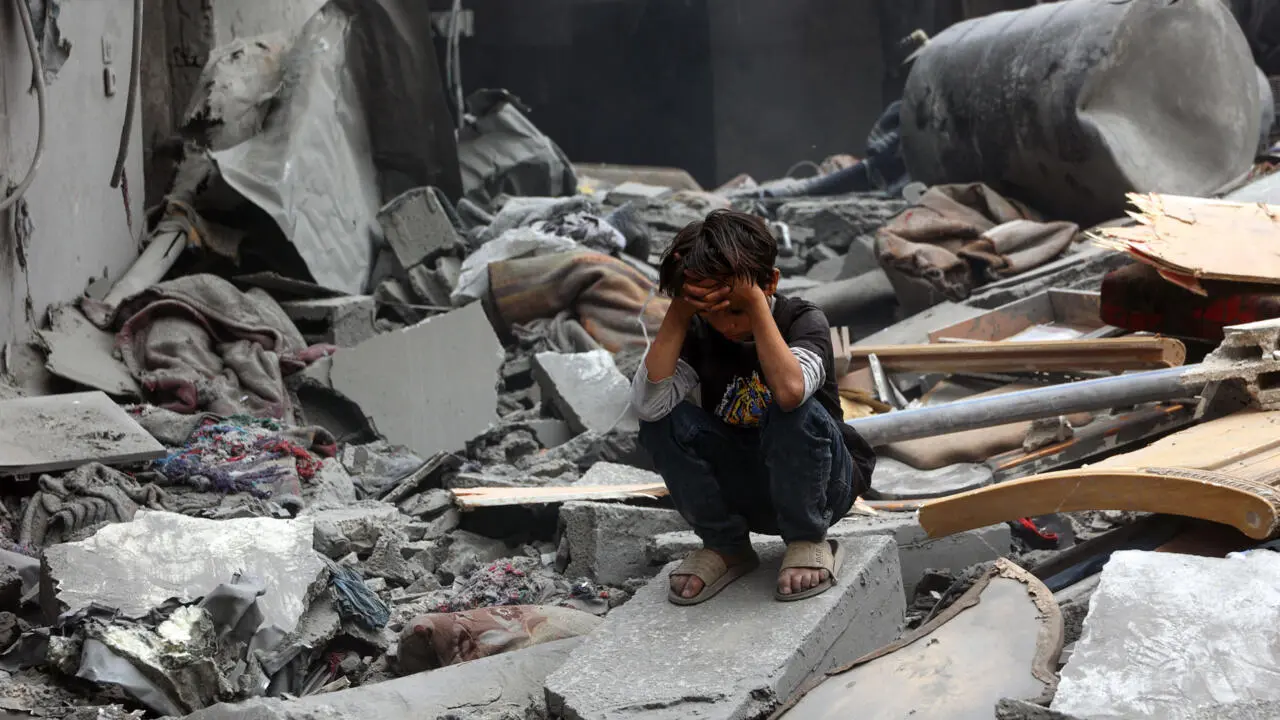
Transformation of Healthcare System
The combined impact of infrastructure destruction and blockades has transformed Gaza’s healthcare system into a fragmented network struggling to provide even basic medical services. Medical facilities operate in survival mode, with healthcare workers attempting to save lives under conditions that defy modern medical standards.
Humanitarian Crises and Their Devastating Impact on Civilians’ Health
The scale of human suffering in Gaza has reached catastrophic levels, with over two million Palestinians facing multiple, interconnected humanitarian crises. Recent data reveals that:
- 95% of the population lacks access to safe drinking water
- 80% of families experience severe food insecurity
- 1.9 million Palestinians have been displaced from their homes
- 70% of residential buildings have sustained damage or destruction
These statistics represent real human struggles, as families navigate daily survival without basic necessities. Displaced Palestinians often find themselves in overcrowded shelters, where limited sanitation facilities serve thousands of people.
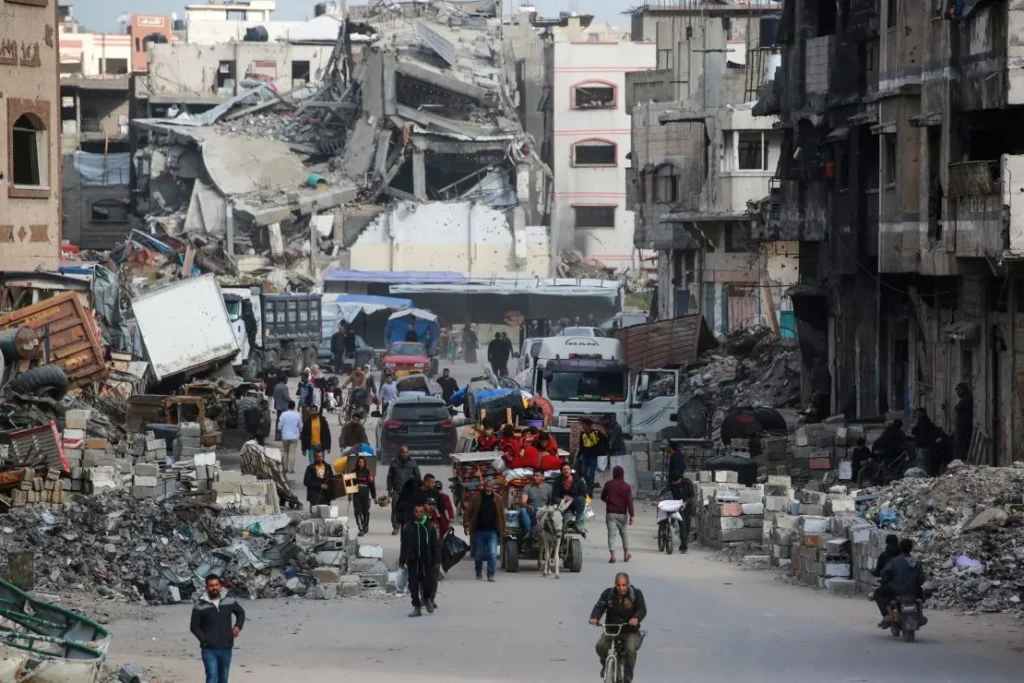
Vulnerable Populations at Greatest Risk
Children and elderly residents bear the heaviest burden of this crisis:
- Children (40% of Gaza’s population)
- Severe malnutrition rates have doubled
- Widespread trauma and psychological distress
- Increased susceptibility to respiratory infections
- Disrupted vaccination schedules
- Elderly Population
- Limited access to chronic disease medications
- Mobility challenges in accessing medical care
- Higher risk of dehydration and malnutrition
- Isolation from support systems
The health implications extend beyond immediate physical concerns. Mental health professionals report alarming rates of:
“Acute stress disorders, depression, and anxiety among civilians, particularly children who display symptoms of severe trauma” – Gaza Mental Health Foundation
Long-term Health Consequences
The current crisis creates conditions for lasting health impacts:
- Chronic Disease Management
- Disrupted treatment for diabetes
- Uncontrolled hypertension
- Compromised cancer care
- Infectious Disease Spread
- Rising cases of respiratory infections
- Skin diseases from lack of hygiene
- Waterborne illness outbreaks
- Hepatitis A transmission
- Mental Health Crisis
- Post-traumatic stress disorder
- Generational trauma
- Depression and anxiety disorders
- Developmental delays in children
The deteriorating living conditions create a perfect storm for disease transmission. Crowded shelters, combined with limited access to clean water and proper sanitation, accelerate the spread of infectious diseases. Health workers report treating increasing numbers of preventable ailments due to these dire circumstances.
This situation is not an isolated incident but part of a larger global trend as highlighted in the Global Humanitarian Overview, which outlines the growing scale and complexity of humanitarian crises worldwide.
As per a recent WHO report, the healthcare system in Gaza is on the brink of collapse, struggling to cope with the overwhelming needs of the population amidst ongoing conflict and blockade.
Furthermore, the mental health repercussions are profound. A study published in a medical journal discusses how such prolonged exposure to traumatic events can lead to severe mental health issues not only for those directly affected but also for future generations.
Attacks on Healthcare Facilities: A Grave Threat to Patient Care and Medical Staff Safety
The systematic targeting of healthcare facilities in Gaza has created an unprecedented crisis for both patients and medical personnel. Recent reports from the World Health Organization document over 250 attacks on healthcare facilities since October 2023, resulting in severe damage to critical medical infrastructure and equipment.
Impact on Hospitals
Gaza’s remaining operational hospitals face daily security threats while managing an overwhelming influx of trauma patients. Medical staff report:
- Operating at 300% capacity
- Treating patients on floors and in corridors
- Performing surgeries without adequate anesthesia
- Working through power outages and equipment failures
The destruction of Al-Shifa Hospital, Gaza’s largest medical complex, exemplifies the devastating impact of these attacks. The facility’s intensive care unit, emergency department, and specialized surgical wings now lie in ruins, leaving thousands of patients without access to critical care.
Challenges Faced by Medical Personnel
Medical personnel work under extreme conditions that threaten their physical and psychological well-being:
“We’re performing complex surgeries under flashlights, making life-or-death decisions without proper diagnostic tools, and watching patients die from treatable conditions due to lack of supplies” – Gaza emergency physician
The risks to medical staff include:
- Direct exposure to military operations
- Physical injuries from nearby explosions
- Severe psychological trauma
- Exhaustion from extended shifts
- Separation from their own families
Hospital staff report working 36-hour shifts while dealing with their own displacement and loss. Many medical professionals continue their duties despite losing their homes or family members, highlighting their extraordinary dedication under unprecedented pressure.
Violation of International Humanitarian Law
The targeting of healthcare facilities not only violates international humanitarian law but also creates a ripple effect throughout Gaza’s healthcare system. Each damaged facility increases the burden on remaining hospitals, creating a cycle of deteriorating medical care that affects the entire population. This situation is exacerbated by unlawful Israeli hospital strikes which worsen the health crisis further.
Health Conditions Resulting from the Crisis: A Public Health Nightmare
The worsening conditions in Gaza have created an environment perfect for devastating disease outbreaks. With 95% of the population lacking access to safe drinking water, the risk of waterborne diseases has reached critical levels. Contaminated water sources, along with non-working sewage systems, have created ideal breeding grounds for cholera, typhoid, and other infectious diseases. The situation is so dire that medical professionals are already working to stop cholera spread amid conflict.
Overcrowded Shelters and Its Effects
Overcrowded shelters house thousands of displaced Palestinians, making social distancing impossible and increasing the transmission risk of respiratory infections. These cramped conditions have already led to documented cases of:
- Acute respiratory infections
- Skin diseases
- Gastrointestinal illnesses
- Hepatitis A outbreaks
Destruction of Sanitation Infrastructure
The destruction of sanitation infrastructure has forced many to live without basic hygiene facilities. Raw sewage flows into streets and residential areas, creating additional health hazards. Medical experts report rising cases of:
- Diarrheal diseases in children
- Scabies infections
- Bacterial infections from untreated wounds
- Dehydration-related complications
Critical Public Health Threats
The collapse of waste management systems has led to garbage accumulation in residential areas, attracting disease vectors like rats and insects. This environmental degradation increases the risk of:
- Vector-borne diseases
- Food contamination
- Secondary infections in wounded patients
- Spread of antimicrobial-resistant bacteria
The lack of functioning medical facilities worsens these health risks. Without proper diagnostic capabilities and treatment options, diseases spread unchecked through vulnerable populations. Pregnant women, children, and elderly individuals face particularly high risks of complications from preventable illnesses.
The crisis has created a dangerous cycle: destroyed infrastructure leads to poor living conditions, which breed disease outbreaks, while the collapsed healthcare system cannot respond to these emerging threats. Medical professionals warn that without immediate intervention, Gaza faces potential epidemics that could affect generations to come.
Urgent Responses Needed: Humanitarian Organizations Call for Action
The International Rescue Committee (IRC) leads global efforts to address Gaza’s healthcare crisis through targeted interventions and advocacy. Their response strategy includes:
- Coordinating emergency medical supply deliveries
- Deploying specialized medical teams
- Establishing mobile health units
- Supporting local healthcare workers with resources and training
Major humanitarian organizations have united in their call for immediate action:
“The situation demands not just temporary solutions but sustained international intervention to prevent further collapse of Gaza’s healthcare infrastructure” – IRC Emergency Response Director
The United Nations Relief and Works Agency (UNRWA) has initiated emergency protocols to:
- Create temporary medical facilities in safer zones
- Distribute essential medicines and supplies
- Provide emergency medical training to local volunteers
These organizations emphasize that humanitarian ceasefires represent a critical first step toward meaningful intervention. Such pauses would enable:
- Safe passage for medical personnel
- Delivery of vital medical supplies
- Evacuation of critical patients
- Assessment of damaged healthcare facilities
The World Health Organization has proposed a comprehensive aid package that includes:
- Emergency medical equipment
- Essential medications
- Portable water purification systems
- Mental health support resources
These immediate response measures must align with long-term rebuilding strategies to restore Gaza’s healthcare capacity and prevent future systemic failures.
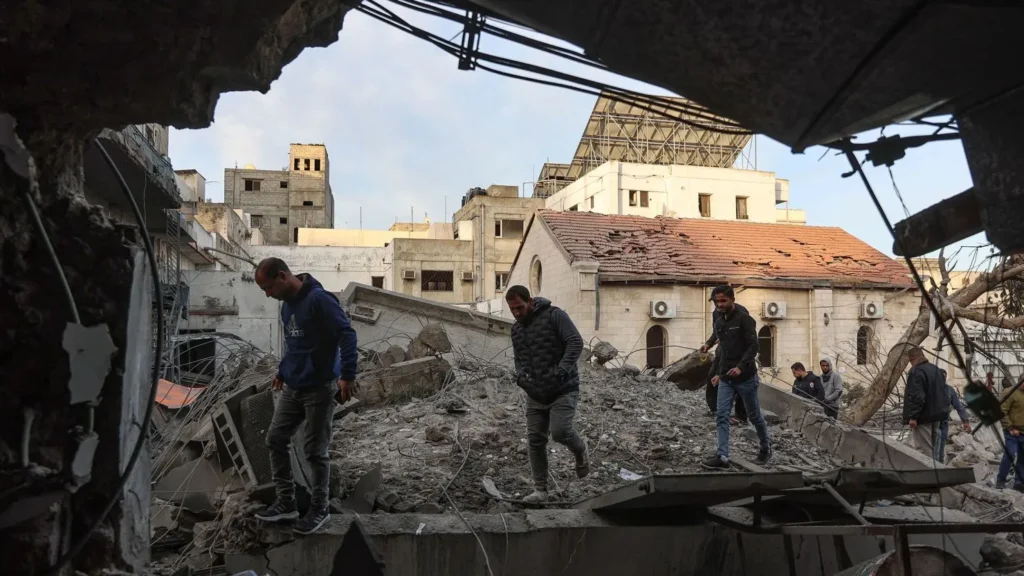
Conclusion: A Call for Global Awareness and Support Beyond Immediate Needs
The Gaza healthcare crisis demands immediate global attention and sustained support. Palestinian civilians face unprecedented suffering as their health system lies in ruins. While emergency medical supplies offer critical short-term relief, rebuilding Gaza’s healthcare infrastructure remains essential for lasting change.
The path forward requires:
- Sustained international funding for hospital reconstruction
- Development of resilient medical supply chains
- Training and support for healthcare workers
- Implementation of sustainable healthcare programs
The world cannot turn away from this humanitarian catastrophe. Each day without action means more lives lost and increased civilian suffering. Your voice, advocacy, and support can help restore essential healthcare services to millions of Palestinians in desperate need.
[Take action now: Support humanitarian organizations working to rebuild Gaza’s healthcare system]
FAQs (Frequently Asked Questions)
What is the current state of the healthcare system in Gaza?
The healthcare system in Gaza is currently in a state of collapse due to ongoing conflict and blockades, which have led to a catastrophic deterioration of healthcare services. This situation has resulted in immense suffering for millions of Palestinian civilians who are unable to access necessary medical care.
How do blockades affect healthcare delivery in Gaza?
Blockades severely limit access to essential medical supplies, fuel, and personnel required for effective healthcare delivery. This has devastating consequences for patient care and hospital operations, with many facilities struggling to function amidst ongoing violence and infrastructure damage.
What humanitarian crises are impacting the health of Palestinians?
Over two million Palestinians are affected by multiple humanitarian crises, including displacement, food insecurity, and lack of clean water. Vulnerable populations such as children and the elderly face disproportionate impacts, leading to long-term health issues like increased prevalence of diseases and mental health challenges.
What threats do healthcare facilities face during the conflict in Gaza?
Healthcare facilities in Gaza have faced documented attacks during the ongoing conflict, posing a grave threat to patient care and the safety of medical staff. Hospitals are overwhelmed with trauma patients while simultaneously dealing with risks to their safety and wellbeing.
What public health threats arise from the crisis in Gaza?
The crisis has created fears of widespread disease outbreaks due to overcrowding, inadequate sanitation facilities, and limited access to clean water. Poor living conditions have heightened vulnerability to infectious diseases such as cholera and COVID-19 among the population.
What actions are humanitarian organizations taking in response to the crisis?
Organizations like the International Rescue Committee (IRC) are calling for urgent humanitarian ceasefires to facilitate aid delivery. They emphasize that addressing immediate needs—such as providing medical supplies—alongside long-term solutions like rebuilding healthcare infrastructure is crucial for sustainable improvement in Gaza’s healthcare system.
